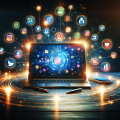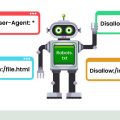In today’s digital marketplace, the spotlight in ecommerce SEO is transitioning from traditional shop category pages to a meticulous focus on Google Shopping optimization. The introduction of Google’s Shopping Graph—an intricate, AI-powered product entity database—is revolutionizing how products gain visibility online. With the advent of generative AI, search behaviors are rapidly evolving, making online research quicker, more interactive, and inherently personalized. As a result, ecommerce brands must adapt by embedding comprehensive product attributes into diverse data sources to maintain their competitive edge. By embracing this hybrid approach that intertwines traditional SEO with AI-driven methods, businesses can better navigate the dynamic landscape of online shopping while enhancing their product display within the Shopping Graph.
Shift in Ecommerce SEO Focus Towards Google Shopping Optimization
Have you ever wondered why your ecommerce store isn’t getting the traffic it used to from search engines? The world of ecommerce SEO is evolving at a breakneck pace, and traditional strategies that once worked wonders are now morphing into something new. The rise of Google Shopping and the integration of the Shopping Graph represent a significant shift in how ecommerce websites need to optimize for visibility and sales. Let’s dive into this transformation and see what it means for your business.
The Changing Landscape of Ecommerce SEO
Traditional Focus: Shop Category Pages
Once upon a time, optimizing shop category pages was the bread and butter of ecommerce SEO. You painstakingly selected keywords, meticulously optimized meta tags, and ensured each category page was filled with rich, compelling content. However, the winds of change are blowing.
Transition to Google Shopping
As more consumers turn to online shopping, the ways they search for products have evolved. Google Shopping is quickly becoming the go-to for many online shoppers. With its easy-to-navigate interface and direct access to product listings, Google Shopping is drawing traffic away from traditional category pages.
Understanding the Google Shopping Graph
What is the Google Shopping Graph?
Imagine a colossal, interconnected database that knows almost everything there is to know about millions of products. That’s the Google Shopping Graph in a nutshell. Powered by advanced machine learning algorithms, the Shopping Graph is a semantic product entity database that integrates data from various sources to provide detailed product information.
Importance of the Shopping Graph
The Shopping Graph’s importance can’t be overstated. It’s becoming crucial for ecommerce visibility, providing a treasure trove of information about your products to potential customers. With AI integration, it’s not just about having your products listed; it’s about how well they are represented in the Shopping Graph.
The Impact of Generative AI
Changing Search Behaviors
Generative AI is revolutionizing how users engage with search results. Imagine you’re looking for a new pair of running shoes. Instead of browsing through countless pages of search results, generative AI provides a more interactive and personalized experience, often in the form of AI-generated snippets.
Reducing Touchpoints
This AI-driven approach means fewer touchpoints are needed to find products. Users get more of the information they want right away, which can significantly boost your conversion rates if your products are properly optimized.
Search Generative Experience (SGE)
What is SGE?
Search Generative Experience (SGE) is a game-changer for ecommerce. A substantial portion of ecommerce-related queries now feature AI-generated snippets. These snippets often bypass traditional search results, offering information pulled directly from the Shopping Graph.
How SGE Works
When users search for products, SGE leverages the Shopping Graph to display snippets filled with detailed product information. This not only saves users time but also provides them with a richer search experience.
Sources of Data for the Shopping Graph
Comprehensive Data Sources
The accuracy and breadth of the Shopping Graph don’t just come from Google searches. It compiles information from a variety of sources:
- YouTube Videos: Product reviews and tutorials provide valuable insights.
- Manufacturer Websites: Direct data from the source ensures accuracy.
- Online Shops: Retailers’ product listings are included.
- Google Merchant Center: Businesses can directly upload their product data.
- Google Manufacturer Center: Supplementary product details from manufacturers.
- Product Testing and Reviews: User-generated content adds authenticity.
Real-Time Updates
With over 35 billion products in its database, the Shopping Graph operates in real-time, constantly updating to ensure that users get the most current product info, including availability, reviews, materials, colors, and sizes.
Key Features of the Shopping Graph
Detailed Product Information
The Shopping Graph isn’t just about showing products; it’s about showcasing every detail. Information on availability, reviews, materials, colors, and sizes is readily accessible, giving users a comprehensive view of what they are interested in.
Live Data
One of the standout features of the Shopping Graph is its real-time updates. This ensures that the product information users see is always current, from stock levels to customer reviews.
The RAG Technique: Enhancing Ecommerce SEO
What is RAG?
Retrieval-Augmented Generation (RAG) is a technique that enhances the relevance of responses by using external data sources—in this case, the Shopping Graph. This is particularly useful in ecommerce for product recommendations and personalized suggestions.
How RAG Works in Ecommerce
By pulling data from the Shopping Graph, RAG can generate more accurate and relevant product recommendations. This means higher conversion rates for your ecommerce store as customers find exactly what they need quicker.
Optimization Recommendations
Integrating Product Attributes
To maximize your visibility in the Shopping Graph, integrate relevant product attributes into your data sources. This means going beyond basic details and including comprehensive descriptions, high-quality images, and accurate stock levels.
| Optimization Element | Description |
|---|---|
| Product Titles | Use clear and descriptive titles with target keywords. |
| Descriptions | Detailed information on features, benefits, and uses. |
| High-Quality Images | Multiple angles, high resolution, and true-to-life representations. |
| Stock Levels | Keep stock information up-to-date to avoid customer disappointment. |
| Customer Reviews | Actively encourage and respond to customer reviews to build credibility. |
Aligning with AI Prompts and Language Models
The context and attributes that are essential for AI prompts and language models should be well-represented in your product listings. This aligns your listings with what AI-generated results will showcase, ensuring higher visibility.
The Future of Ecommerce SEO
Hybrid Approach: Combining AI and Traditional Methods
The future lies in a hybrid SEO strategy, combining the strengths of AI and traditional methods. While it’s important to continue optimizing your category pages and utilizing traditional SEO techniques, placing a stronger emphasis on Google Shopping optimization will prepare you better for what’s to come.
Leveraging Structured and Unstructured Data
Incorporate both structured data (like schema markup) and unstructured data (such as customer reviews) to boost your product listings. This comprehensive approach will align with the evolving Shopping Graph and keep your products visible.
Strategic SEO Shifts
Prioritizing Shopping Graph Optimization
As we have explored, optimizing for the Shopping Graph should be a priority. This will help you leverage AI advancements effectively for your ecommerce business.
Adapting to Generative AI
Understanding and adapting to the changing landscape brought about by generative AI will ensure you stay ahead. This involves not just technical SEO but also content strategies that align with AI-based search advancements.
In Conclusion
The shift in ecommerce SEO towards Google Shopping optimization represents a new era of search behavior and product visibility. By understanding and embracing the Shopping Graph, leveraging advanced AI techniques like RAG, and focusing on comprehensive optimization, you can ensure your ecommerce store thrives in this evolving digital landscape. The future is hybrid, and those who adapt will be the ones to reap the rewards. So, is your ecommerce store ready for this transformation? Let’s gear up and get optimizing!









